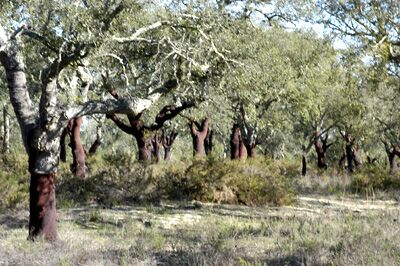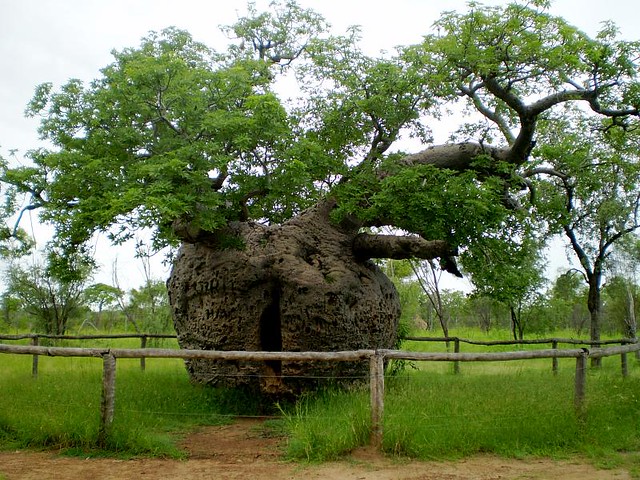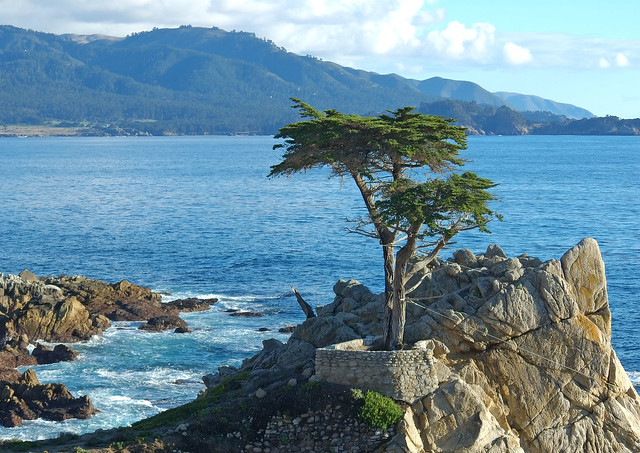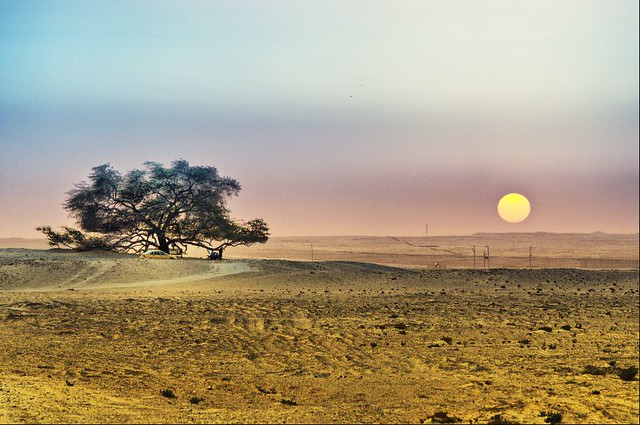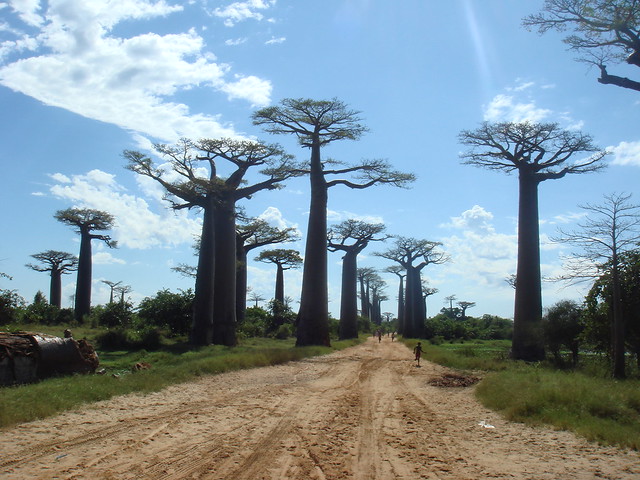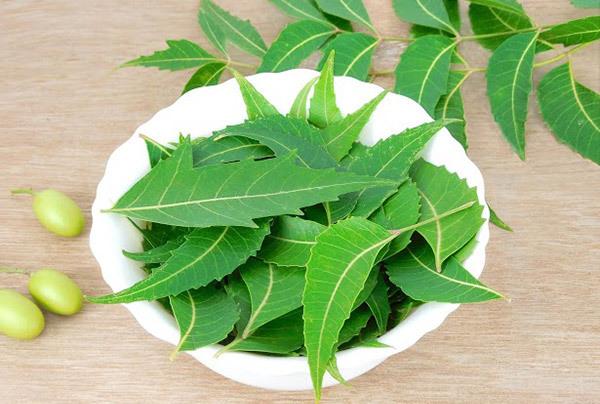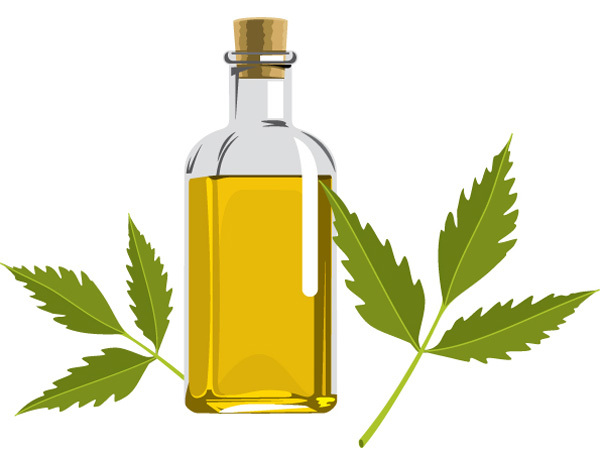Introduction
I had some success with my 10 most famous trees ,
and so I decided I should do plants too. After all, plants have a
reputation for being motionless and boring. These 20 plants challenge
the mundane stereotype that plagues their kingdom. (Okay, technically
some are fungi, so I cheated a little.) Hope you enjoy!
Number 1: "Corpse Flower"
 |
| Not only is it ugly, it smells like a corpse. Luckily only 28 have bloomed in the United States |
Wacky because:
It smells strongly like a rotting corpse, and it looks like it belongs in the movie Avatar. I would imagine that the smell helps it not be eaten, but despite this the plant is still very rare. In other words, it's endangered. Coming from the forests of Sumatra, it's not actually one big flower. Its thousands upon thousands of little male and female flowers. These exert oils, while the center collects heat. The heat of the oils create the smell that attracts beetles that will pollinate it. In case you were wondering, a mature one can weigh 200 pounds.
It smells strongly like a rotting corpse, and it looks like it belongs in the movie Avatar. I would imagine that the smell helps it not be eaten, but despite this the plant is still very rare. In other words, it's endangered. Coming from the forests of Sumatra, it's not actually one big flower. Its thousands upon thousands of little male and female flowers. These exert oils, while the center collects heat. The heat of the oils create the smell that attracts beetles that will pollinate it. In case you were wondering, a mature one can weigh 200 pounds.
Number 2: Elephant Foot Yam
 |
| The famous Amorphophallus |
Guess who this little cute guy is related to? Yep, the corpse flower. Not only are they related, they also share many characteristics. One happens to be that this guy also smells like a corpse. These elephant foot yams vary in color, as well. Some are pure white.
This one might have the edge on the corpse flower in wackiness because it is eaten. In one Southeast Asian culture they are grown as a delicacy, while in another they are known as what we might call a "last resort" to eat.
Number 3: Rafflesia Arnoldis
 |
| Looks like it could put on a stick and be considered a pinwheel |
Guys, I can't believe it either. But I promise this is the last plant that smells like a corpse. This one is unique in that it is the worlds largest single flower. It is also wacky because it has no stems, leaves, or roots--so it's pretty bad at actually being a plant. It's related to fungi, but according to wikipedia, is a plant. It is also commonly referred to as the corpse flower for the smell.
Want to find one so you can plant it in your backyard? Me too, however these are extremely hard to find. Scientists aren't even sure if they're endangered or not. They live a majority of their lives as teeny tiny little flowers until they explode into that to the right for a few days.
Number 4: Venus Flytrap
 |
| Flies, will you ever learn? Do NOT go near the plant with jaws! |
It's carnivorous. Not many plants eat things besides sunlight. Even fewer (as in about four species) are capable of rapid movement. This makes the Venus Flytrap seem like, I don't know, it might be from another planet or something... Anyway, you might wonder how the trap is triggered. Well, they have trigger hairs. These trigger hairs trigger the trap when two are touched within 20 seconds of each other.
Why does it have jaw looking things? Those act like interlocking fingers, or to the insect inside, prison bars. They do their best to restrain the insect from escaping. Healthier Venus Flytraps close quicker on their prey, but scientists are kind of unsure about the mechanism. Then the rest is done with digestive juices.
Number 5: Nepenthes "Tropical Pitcher Plants"
 |
| Eats insects, spiders, ...lizards...rats... |
Answer: If there is any other answer but the Nepenthes plants, I want to hear it!
Wacky because:
Monkeys have been spotted drinking from it. Rats have been spotted partially digested in it. And some other stuff too (no, it doesn't smell like a corpse). These plants come in all sorts of varieties and are predominately found in the same regions as the #1,2, and 3 plants that you've already read about. So if you want to see some interesting plants, go to the Sumatra and Borneo forests.
The diet of these things includes just about anything the right size that can fit in them. That means lizards, termites, spiders, worms, etc. can be digested by the Nepenthes. They also have some complex relationships with the ecosystem. Flies and mosquitoes have been known to lay larva on them. Much of their diet comes from feces of the tree shrew species (a mammal), and ants have been known to eat out of it. Sound like I'm making this all up? I'm not.
Number 6: Cape Sundew
 |
| An atypical carnivore |
Like I mentioned before, there are more carnivorous plants out there than you probably realized (more than I realized, anyway). The Cape Sundew eats insects not with rapid movements, or weird pitcher shaped appendages, but instead by slowly wrapping its arms (by that I mean "leaves") around prey. This is slow, on average about 30 minutes, and probably fairly cruel.
This is also the first plant on the list that is very good at reproducing. Not only can it reproduce, but it can survive large fluctuations of temperature and water availability as well. So that's why humans like to keep them, because they allow for carelessness when they are being grown. It is originally from South Africa and is invading New Zealand (It's hard to rid a large area of them!).
Number 7: Strangler Fig
 |
| Probably the biggest asshole plant on Earth |
The Strangler Fig is the biggest mooch of the plant kingdom. Not only does it mooch, it kills. There are many different species of Strangler Fig, but they all are basically the same thing: that roommate who steals all of your food. Or that guy at a party who steals all of your beer. Or that guy in class that copied your homework and got a better grade. Only he kills you (could be a her, I'm not sure). Anyway, they are dispersed usually by hitch hiking on birds and being dropped on the canopy of trees of a dense forest. They are wacky because they will grow up and down. Down so they can choke the living tree of all the nutrients, and up for sunlight. They often outlive the host tree by years, sometimes forming hollow cores that house the spirit of the old tree.
Number 8: Bear's Head Tooth Mushroom
 |
| The creativity of Mother Nature... |
Well just look at it. That's a mushroom. If you're not convinced that it should be on this list... it also fights cancer, stimulates nerve growth, and helps kill roundworms. How do we know? Well some really brave soul found out it was edible. Cydro still wouldn't put it on his sandwiches no matter what it does.
Oh yeah, it can grow branches too. I'm not sure how they came up with the name though. Looks more like a brand new mop to me.
Number 9: Witches' Butter
 |
| It must have been a triple dog dare to make the first person eat that. |
Wacky because:
Well, I thought it looked funny. It also reproduces by both sexual and asexual production. If you do happen to try to eat it, you'll find that it has no flavor. Witches' butter is currently being studied because of unique biological processes that it undergoes. Some believe that they will prove to have health benefits. It grows on recently fallen and dead trees.
Number 10: Drakaea glyptodon
 |
| Basically a wasp sex toy |
Well, it pollinates in a unique way. Does that red thing on the side look like it belongs there? When you look even closer, what's that black thing on top of the red thing? Well, you'll find this appendage on all of the Drakaea glyptodon that you come across.
Female wasps happen to be flightless. They also happen to climb on top of plants to S.O.S. until the male picks them up and does his thing to reproduce with them during flight. The Drakaea glyptodon mimicks the female wasp's body. The male wasp, being a dumb horny guy, will pick up the fake female wasp. Not only does he have to pick it up, but he has to come into contact with another Drakaea glyptodon to actually pollinate the plant. So he has to be fooled twice. Now you know how they came up with which was the male and which was the female.
Also, the plant smells like "raw meat." It kind of looks like it, too.
No. 11: Silver Torch Cactus
 |
| Uhem. What are those things? |
Wacky because:
Besides having one of the coolest names on the list, it is a very unusual cactus. It's wooly, but that isn't too spectacular. It grows flowers, but that definitely isn't too unusual. The way the flowers are shaped are unique (yes those are flowers), however other cacti flowers bloom in a similar way just not as horizontally.
The thing that makes it the wackiest is that it prefers cold temperatures. It can stand frosts up to -10 degrees Celsius. It lives in the high mountains of Bolivia and Argentina, receiving strong sunlight and water in the summer. Almost no water is received in the winter though.
Besides having one of the coolest names on the list, it is a very unusual cactus. It's wooly, but that isn't too spectacular. It grows flowers, but that definitely isn't too unusual. The way the flowers are shaped are unique (yes those are flowers), however other cacti flowers bloom in a similar way just not as horizontally.
The thing that makes it the wackiest is that it prefers cold temperatures. It can stand frosts up to -10 degrees Celsius. It lives in the high mountains of Bolivia and Argentina, receiving strong sunlight and water in the summer. Almost no water is received in the winter though.
No. 12: Dragon's Blood Tree
 |
| Should be in a dinosaur movie |
Wacky because...
Man, I wish I had a name like that. Dragon's blood guy, I can see it now. Also one of the coolest looking trees on the countdown. Thirdly, its sap resembles dragons' blood. That means it's a deep red color, and it was prized among the ancients. It can be used for stimulants and toothpaste of all things. Luckily it survived thousands of years of everyone trying to collect it, which is saying a lot since it is only found on the island of Socotra.
The canopy looks like that because its environment doesn't have much soil. The canopy acts as an umbrella to shade the bottom of the tree. This reduces evaporation. Also, the trees tend to bunch together because the shade helps seedling grow.
Man, I wish I had a name like that. Dragon's blood guy, I can see it now. Also one of the coolest looking trees on the countdown. Thirdly, its sap resembles dragons' blood. That means it's a deep red color, and it was prized among the ancients. It can be used for stimulants and toothpaste of all things. Luckily it survived thousands of years of everyone trying to collect it, which is saying a lot since it is only found on the island of Socotra.
The canopy looks like that because its environment doesn't have much soil. The canopy acts as an umbrella to shade the bottom of the tree. This reduces evaporation. Also, the trees tend to bunch together because the shade helps seedling grow.
13: Tree Tumbo
 |
| You wouldn't look much better if you were that old and spent your entire life in the desert |
It is considered a "living fossil" found in the deserts of Namibia and Angola. That's not enough for this countdown though. It is unique in that it has one very short trunk and grows two leaves (only two) from the trunk no matter how mature it is.
Oh yeah, and carbon dating tells us that they're anywhere from 500-2000 years old (and maybe older). So the one pictured to the right will probably be alive when your great-great-great grand kids are alive. That is assuming no apocalypses happen, although I'd bet these guys know how to survive much better than we do.
No. 14: Hydnora Africana
 |
| Kind of pretty, maybe? |
This looks like it could be found on a different planet in a sci-fi movie. Then again, what science fiction writer could create such a monster? This grows completely underground except for the flower ("flower") that has such a distinct shape. It is shaped like that in order to maximize the ability for hairs on the "flower" to direct beetles to its unpleasant center.
Why would beetles want to go near that? Well, because it smells like poop. The dung beetle is attracted to it, and many a dung beetle have been trapped in the center. I know what you're thinking. Cydro, will you lay off with the carnivorous plants? Well, it doesn't even eat them. It traps them until the flower is completely mature. The flower then releases all the beetles with so much pollinating and reproduction potential. The male and female Hydnoras have different receptors for this pollination, so the beetles have to come across another Hydnora for it to work.
15: Wolffia Anguste
 |
| Eeny weeny, aren't they? |
Wow they're small! In fact, they're the world's smallest flowering plant! How small are they? Well...
Step 1) FInd an "o" on this page
Step 2) Imagine two specks inside that "o". Two adult Wolffias could fit inside of that o! Also, if you looked back in 30-36 hours, there might be four of them! They reproduce really fast. One more thing: they don't even have leaves or stems.
So they're being discovered just about everywhere now that scientists know what they exactly are. If you've been to a pond or a river there's a decent chance you've encountered them.
No. 16: Lithops Julli
 |
| That's a plant? |
Some plants use toxins to avoid being eaten. Some use thorns, or turn into carnivores. The Lithops Julli survives by pretending to be a rock. If you're into picking up rocks in South Africa, chances are you'll pick one of these up, too.
The disguise seems useless because they're flowering plants. Nope, even the flowers are disguised with abstract lines and colors. The colors of everything about the plant are atypical for this very reason.
17: Victoria Amazonica
 |
| Who put that baby there!?!? |
Wacky because...
These guys have some pretty amazing features. And they grow up to three meters across! The ends fold up to avoid overlapping with their brethren. Also, the undersides are very thorny to protects against being eaten. Their flowers are huge, beautiful, and can only be seen at night. The flowers also change color over the course of the lily's lifetime. If you see them at daybreak you can watch the flowers close up rather quickly.
Lastly, if you google image them, you're likely to find a baby pictured on top of them. Apparently people have a fascination with this. Mature lilies can support up to 45 kg on them.
These guys have some pretty amazing features. And they grow up to three meters across! The ends fold up to avoid overlapping with their brethren. Also, the undersides are very thorny to protects against being eaten. Their flowers are huge, beautiful, and can only be seen at night. The flowers also change color over the course of the lily's lifetime. If you see them at daybreak you can watch the flowers close up rather quickly.
Lastly, if you google image them, you're likely to find a baby pictured on top of them. Apparently people have a fascination with this. Mature lilies can support up to 45 kg on them.
No. 18: Dracunculus Vulgaris
 |
| I wish I had a garden with all of the plants on this countdown |
Okay, so I promised to not mention any more plants that smell like a corpse. This one only does it for a day, and it has been described as more of a rotting smell, so does that count? Anyway, it smells to attract flies which in turn pollinate it. This one is peculiar because it is found in Europe, not Southeast Asia.
It is severely poisonous as well. So look, don't touch!
19: African Acacia
 |
| Looking innocent is the only thing it does better than killing herbivores |
That tree looks normal. I think I saw it on The Lion King. Well, it is from the African savannah. It is also a mass murderer.
"Van Hoven made his discovery when asked to investigate the sudden death of some 3000 South African antelope, called kudu, on game ranches in the Transvaal. He noticed that giraffe, roaming freely, browsed only on one acacia tree in ten, avoiding those trees which were downwind."
The tree, when it is being eaten, gives off ethylene which can be detected by other Acacia trees up to 50 yards downwind. Those trees in turn produce enough toxin to kill an animal, say a kudu. That means the first bite of these trees, rather than making the kudu sick and stop eating, kills it.
Oh, and they have an army of ant bodyguards. The trees provide housing and nectar for the ant, and the biting ants attack whatever comes near the tree. The plant does need herbivores to help spread its young, however, so thus there is one of the most complicated three-way relationships in history.
Last but not least... The Bladderwort
Wacky because...
This one is one of the wackiest. It is found in many different varieties around the southeastern coast of the United States and then also in the state of Washington. What makes it so unique? Well, it uses little air sacs to float when it is flowering. When it isn't flowering, it stays underwater like a seasonal submarine. Also, it is a carnivore. It eats tiny little invertebrates that it sucks into its pods with a vacuum. Beat that, Venus Flytrap.Tiny fish have also been known to trigger the trap.
Also, it is really good at surviving just about anywhere (unlike most carnivorous plants). In some places in the United States they have been a problem and humans are trying to get rid of them.
What happens when one floats into the bank of a pond? Well, it will attach itself to the side by extending little needle-like stems. Who knew a plant could resemble a Swiss Army Knife so much?
This one is one of the wackiest. It is found in many different varieties around the southeastern coast of the United States and then also in the state of Washington. What makes it so unique? Well, it uses little air sacs to float when it is flowering. When it isn't flowering, it stays underwater like a seasonal submarine. Also, it is a carnivore. It eats tiny little invertebrates that it sucks into its pods with a vacuum. Beat that, Venus Flytrap.Tiny fish have also been known to trigger the trap.
Also, it is really good at surviving just about anywhere (unlike most carnivorous plants). In some places in the United States they have been a problem and humans are trying to get rid of them.
What happens when one floats into the bank of a pond? Well, it will attach itself to the side by extending little needle-like stems. Who knew a plant could resemble a Swiss Army Knife so much?
Bonus for reading this far: World's largest and oldest plants
Oldest:
How old is the King's holly?
Take a deep breath and guess.
400 years?
higher...
4,000 years
higher...
40,000 years?!
At least 43,600 actually. It doesn't even have a male or female part, or pollinate. It survives by dropping its cloned branches on the ground until they grow. So scientists counted its birthday candles to determine its true age[citation needed]. They also carbon dated a nearby fossil of the same plant, and that was 43,600 years old.
Here is a great, great article on all the oldest trees of the world.
Largest single stem tree:
The General Sherman tree, or a Giant Sequoia. 275 feet tall (about a football field), weighing about 1,800 tons (3,600,000 pounds), and large enough to drive a school bus through the trunk. It was much smaller than the largest ever recorded tree that fell over in 1905. That tree was a Coast Redwood that weighed 3,300 tons. Wow! These trees, of course, have no natural predators.
How old is the King's holly?
Take a deep breath and guess.
400 years?
higher...
4,000 years
higher...
40,000 years?!
At least 43,600 actually. It doesn't even have a male or female part, or pollinate. It survives by dropping its cloned branches on the ground until they grow. So scientists counted its birthday candles to determine its true age[citation needed]. They also carbon dated a nearby fossil of the same plant, and that was 43,600 years old.
Here is a great, great article on all the oldest trees of the world.
Largest single stem tree:
The General Sherman tree, or a Giant Sequoia. 275 feet tall (about a football field), weighing about 1,800 tons (3,600,000 pounds), and large enough to drive a school bus through the trunk. It was much smaller than the largest ever recorded tree that fell over in 1905. That tree was a Coast Redwood that weighed 3,300 tons. Wow! These trees, of course, have no natural predators.







